Device and setting of EPU at cellular base station
The post is inspired by the story of the Report on the maintenance of the base station of GSM and UMTS standards. It so happened that we are almost colleagues with the author of the article, but in different regions and the limits of operational responsibility are different.
All consumers of communication in the base station (BS) - RRL (radio relay part or relay), the base station itself, SDH - is equipment that operates from -48 volts and DC.
380V is suitable for BS, the task of the electrical power plant (EDA) is to convert 380V (220V) AC to -48V DC. It turns out "+" on the body of the EPU.
Essentially, the work uses EPUs from Eltek, there are several of them from other manufacturers, but they are few, they are old, and difficult to set up. Eltek has FlatPack models and a replacement for her, more flexible in setting up FlatPack 2, which I want to dwell on in more detail.
Electric control unit is a metal cabinet with a height of 2 meters with racks for batteries, a control module (SmartPack), rectifiers, just as it converts 220V AC to -48V constant, their power is usually 2 kW at 48V, they can operate from 185 - 275V, although at 260V the cooler they start to buzz terribly and howl from high voltage, and their efficiency is 92%, the manufacturer reports that the time between failures is 350,000 hours and, indeed, they rarely break, its only minus is weight , one rectifier is quite heavy - 2 kilograms and Sometimes you have to carry a bag with instuments - 10 kg and 3 rectifiers - 6 kg. and another 5 kilograms of every little thing, when an emergency exit and the reason for the disconnection is unknown.
')
EPU:
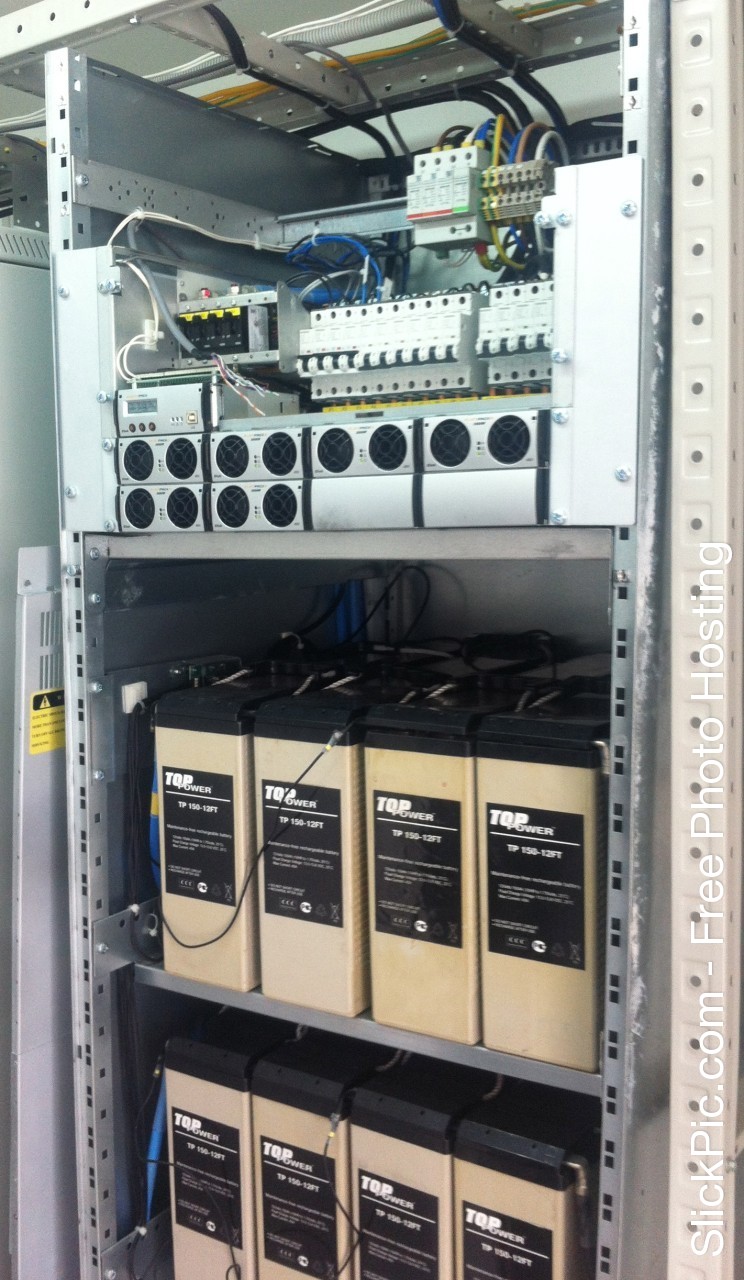
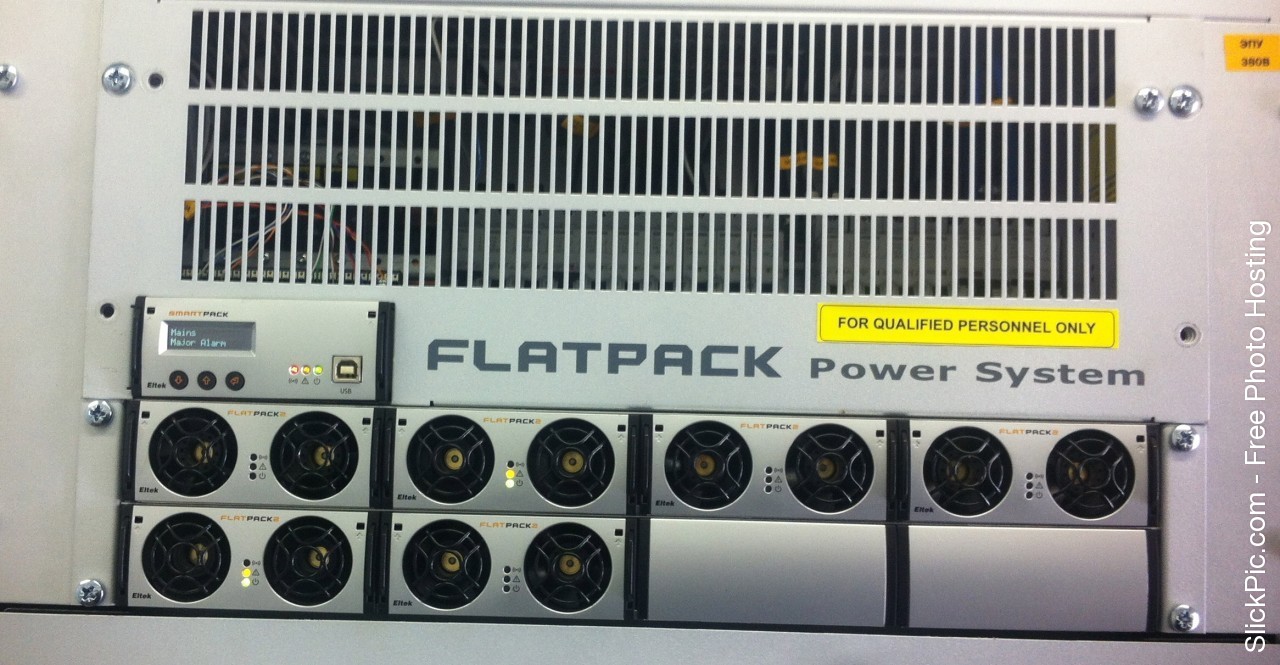
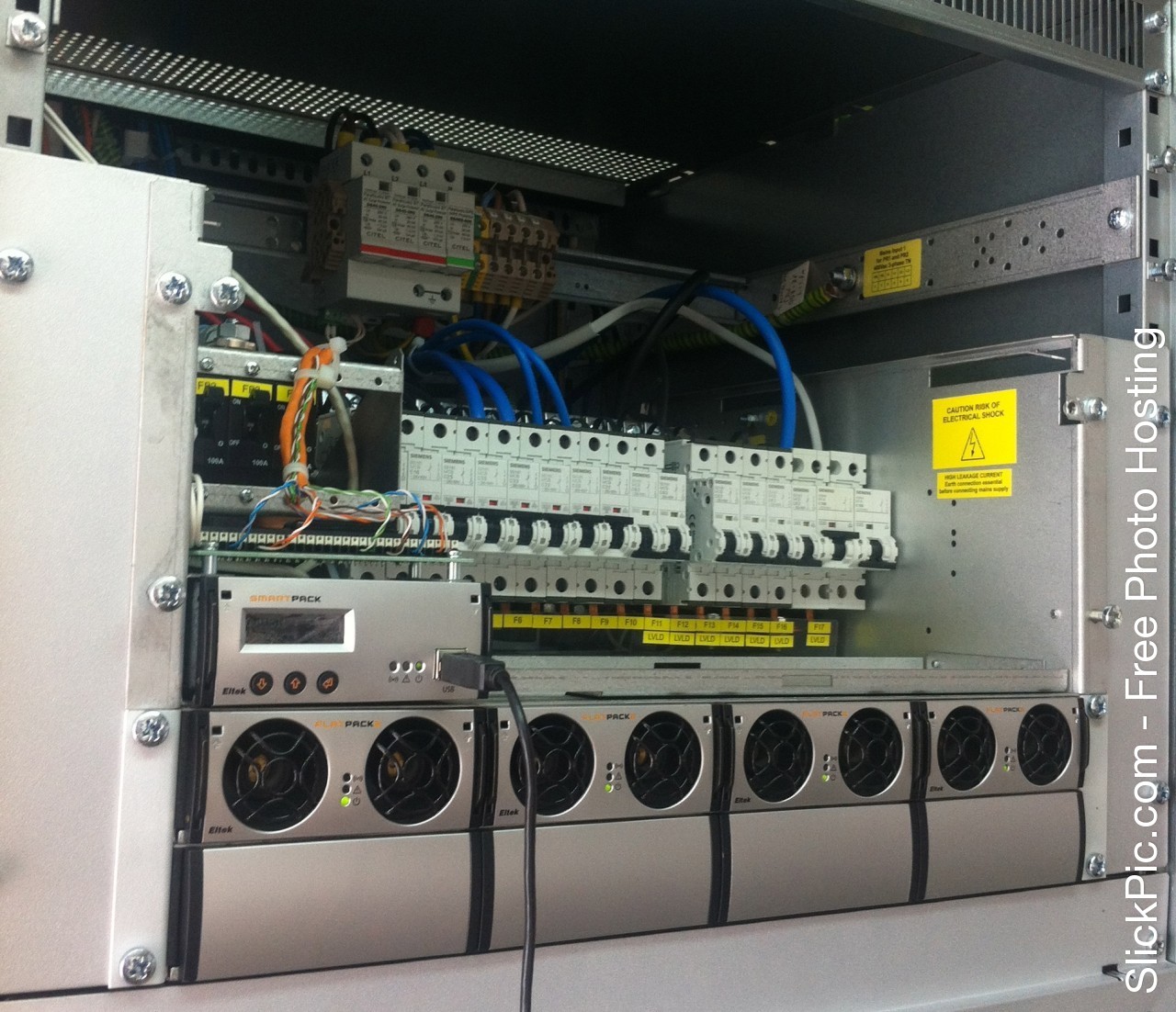
the first is a general view of the EPU,
the second is a view of the rectifiers and the SmartPack,
the third is a view of the load bus, the left one is priority, the right one is non-priority.
Rectifier:

SmartPack:
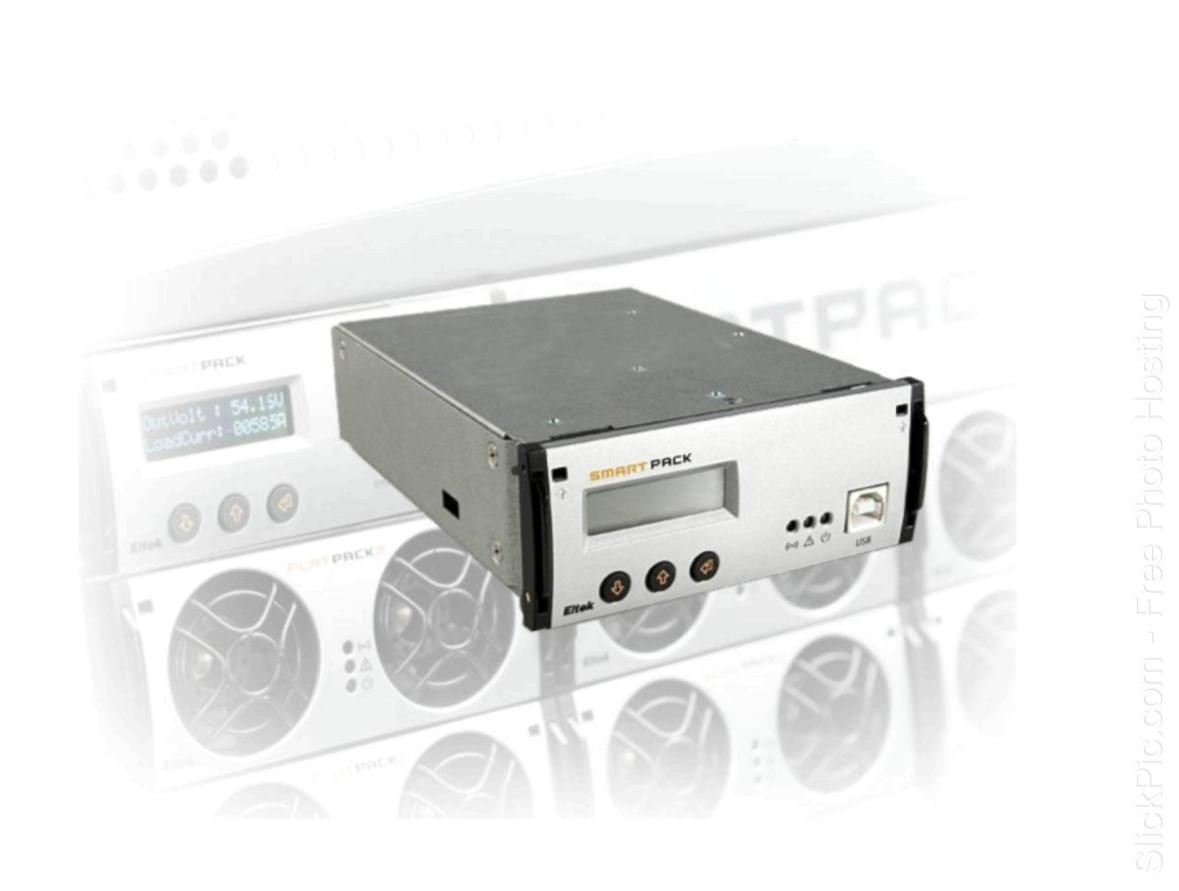
But they distracted from the EPU device, the following elements are two contactors and two rows of automata, I will explain immediately what they are needed for: the first contactor disconnects the non-primary load (LVLD, load), the second, respectively, priority (LVBD, battery), in other words - this contactor turns off the battery.
The system is designed so that if the station is nodal, that is, a stream comes to it, let's say from the controller, and the stream still departs from this station, is divided into several stations, the performance of five others depends on our BS, this station is considered to be nodal, and here it helps us contactors.
RRL, SDH and other transport is always connected to the bus, which is controlled by the LVBD contactor - a priority bus, and the BS to the LVLD is not a priority. Contactors are triggered by the achievement of a certain parameter - this is voltage.
For example, network power at a node station disappears (accident, cable damage, shield burned out), the station starts to work from batteries, they are usually 3-4 groups of 48V, in group 4 batteries of 12V, capacity depends on the installed models, on average it is about 500 Ah
There is a load, the batteries are sitting down and the voltage drops as soon as it has gone down, say, to 46V, then the load contactor opens and the BS turns off (OML Fault crash), but only the priority load remains in operation: the junction does not work, but the transport remains in operation and our five stations successfully broadcast, then the voltage continues to fall and reaches critical 43V below the irreversible processes in the battery begin, the battery contactor turns off the priority load - the transport will drop and the signal disappears at five other BSs By connecting to our. I want to note that since the loss of power and until the batteries are disconnected, different times take place depending on the load, how much the equipment consumes and the condition of the battery. I know that there were cases and the BS dropped after 20 seconds or the node was standing for two days and put the batteries in only one third, everything is very individual. Such a system of prioritizing the load is called separation.
The whole system is controlled by the SmartPack module - the brain of the EPU; all parameters are stored in it. SpartPack has an Ethetnet output with a webmord that looks into the local network, so we can perform most of the settings, monitor the status, watch the alarm signals on the rack, by the way, the information about the alarms on the BS deserves a separate topic.
When servicing the EPU, the engineer connects the cable to the control module and changes the settings of which there are many.
The main thing is that this is separation, alarm setting, for batteries it is charge current regulation, temperature compensation, symmetry - voltage parameter with which you can see on which group the voltage dropped and take measures, for rectifiers - sleep voltage, operating voltage, rectifier current limit. I note that there is also a LED indicator on the rectifiers: green is all ok, yellow is attention and red when the rectifier is out of order, for example, it has blown. Also, we close all automata, battery terminals, remove dust and dirt, all shortcomings are recorded and eliminated with the next MOT.
I would be glad to write new articles on energy in mobile communication!
UPD:
What the web interface looks like:
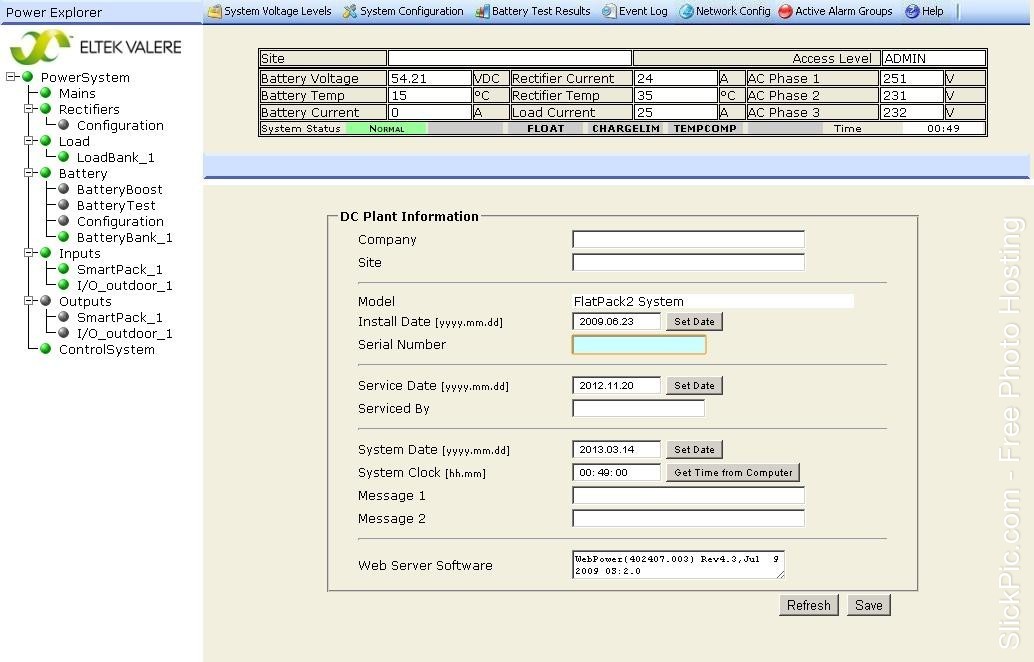
How does the assembled power supply unit look like (hub station for this connects an additional cabinet with battery)
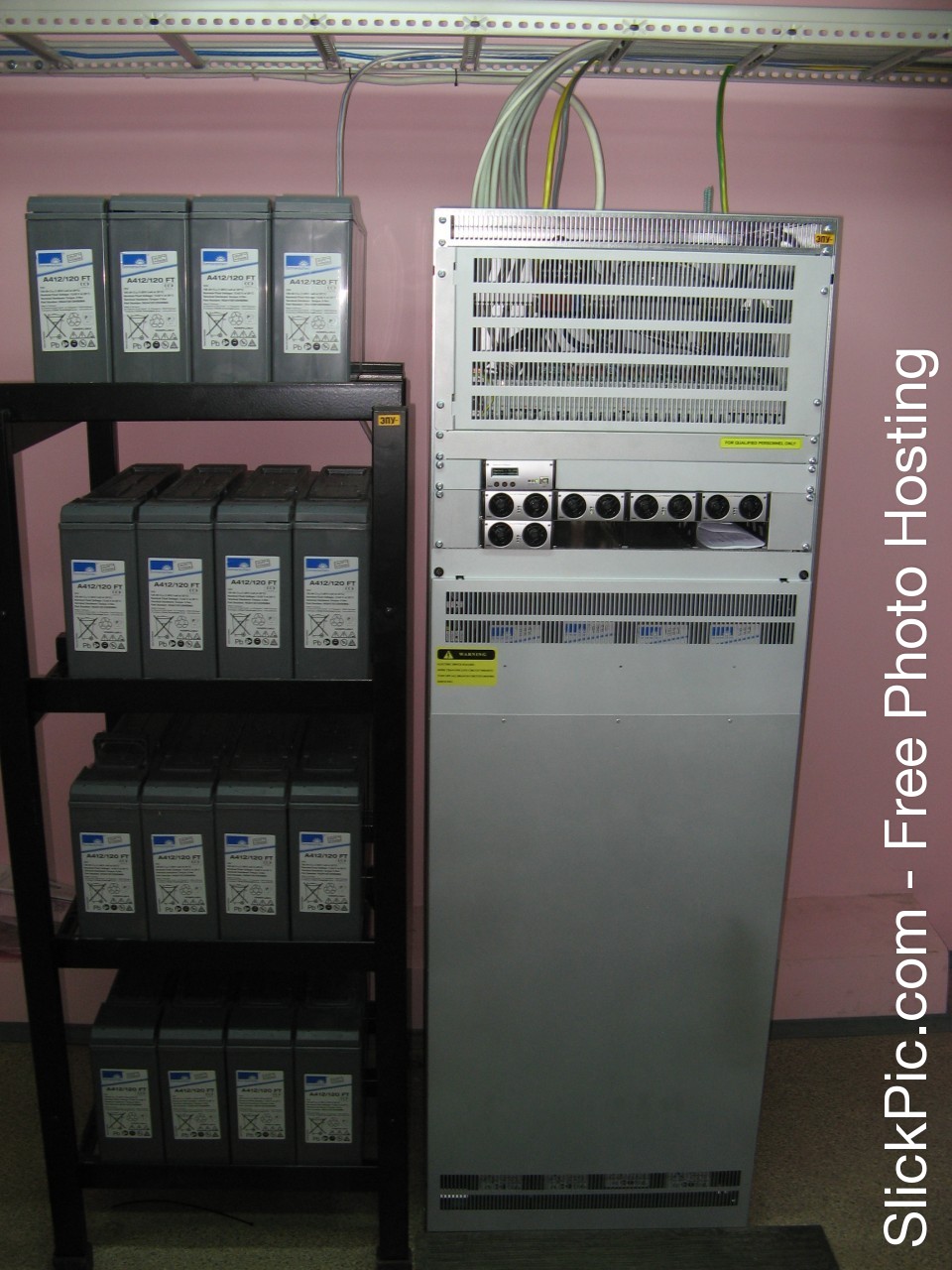
All consumers of communication in the base station (BS) - RRL (radio relay part or relay), the base station itself, SDH - is equipment that operates from -48 volts and DC.
380V is suitable for BS, the task of the electrical power plant (EDA) is to convert 380V (220V) AC to -48V DC. It turns out "+" on the body of the EPU.
Essentially, the work uses EPUs from Eltek, there are several of them from other manufacturers, but they are few, they are old, and difficult to set up. Eltek has FlatPack models and a replacement for her, more flexible in setting up FlatPack 2, which I want to dwell on in more detail.
Electric control unit is a metal cabinet with a height of 2 meters with racks for batteries, a control module (SmartPack), rectifiers, just as it converts 220V AC to -48V constant, their power is usually 2 kW at 48V, they can operate from 185 - 275V, although at 260V the cooler they start to buzz terribly and howl from high voltage, and their efficiency is 92%, the manufacturer reports that the time between failures is 350,000 hours and, indeed, they rarely break, its only minus is weight , one rectifier is quite heavy - 2 kilograms and Sometimes you have to carry a bag with instuments - 10 kg and 3 rectifiers - 6 kg. and another 5 kilograms of every little thing, when an emergency exit and the reason for the disconnection is unknown.
')
EPU:



the first is a general view of the EPU,
the second is a view of the rectifiers and the SmartPack,
the third is a view of the load bus, the left one is priority, the right one is non-priority.
Rectifier:

SmartPack:

But they distracted from the EPU device, the following elements are two contactors and two rows of automata, I will explain immediately what they are needed for: the first contactor disconnects the non-primary load (LVLD, load), the second, respectively, priority (LVBD, battery), in other words - this contactor turns off the battery.
The system is designed so that if the station is nodal, that is, a stream comes to it, let's say from the controller, and the stream still departs from this station, is divided into several stations, the performance of five others depends on our BS, this station is considered to be nodal, and here it helps us contactors.
RRL, SDH and other transport is always connected to the bus, which is controlled by the LVBD contactor - a priority bus, and the BS to the LVLD is not a priority. Contactors are triggered by the achievement of a certain parameter - this is voltage.
For example, network power at a node station disappears (accident, cable damage, shield burned out), the station starts to work from batteries, they are usually 3-4 groups of 48V, in group 4 batteries of 12V, capacity depends on the installed models, on average it is about 500 Ah
There is a load, the batteries are sitting down and the voltage drops as soon as it has gone down, say, to 46V, then the load contactor opens and the BS turns off (OML Fault crash), but only the priority load remains in operation: the junction does not work, but the transport remains in operation and our five stations successfully broadcast, then the voltage continues to fall and reaches critical 43V below the irreversible processes in the battery begin, the battery contactor turns off the priority load - the transport will drop and the signal disappears at five other BSs By connecting to our. I want to note that since the loss of power and until the batteries are disconnected, different times take place depending on the load, how much the equipment consumes and the condition of the battery. I know that there were cases and the BS dropped after 20 seconds or the node was standing for two days and put the batteries in only one third, everything is very individual. Such a system of prioritizing the load is called separation.
The whole system is controlled by the SmartPack module - the brain of the EPU; all parameters are stored in it. SpartPack has an Ethetnet output with a webmord that looks into the local network, so we can perform most of the settings, monitor the status, watch the alarm signals on the rack, by the way, the information about the alarms on the BS deserves a separate topic.
When servicing the EPU, the engineer connects the cable to the control module and changes the settings of which there are many.
The main thing is that this is separation, alarm setting, for batteries it is charge current regulation, temperature compensation, symmetry - voltage parameter with which you can see on which group the voltage dropped and take measures, for rectifiers - sleep voltage, operating voltage, rectifier current limit. I note that there is also a LED indicator on the rectifiers: green is all ok, yellow is attention and red when the rectifier is out of order, for example, it has blown. Also, we close all automata, battery terminals, remove dust and dirt, all shortcomings are recorded and eliminated with the next MOT.
I would be glad to write new articles on energy in mobile communication!
UPD:
What the web interface looks like:

How does the assembled power supply unit look like (hub station for this connects an additional cabinet with battery)

Source: https://habr.com/ru/post/172655/
All Articles